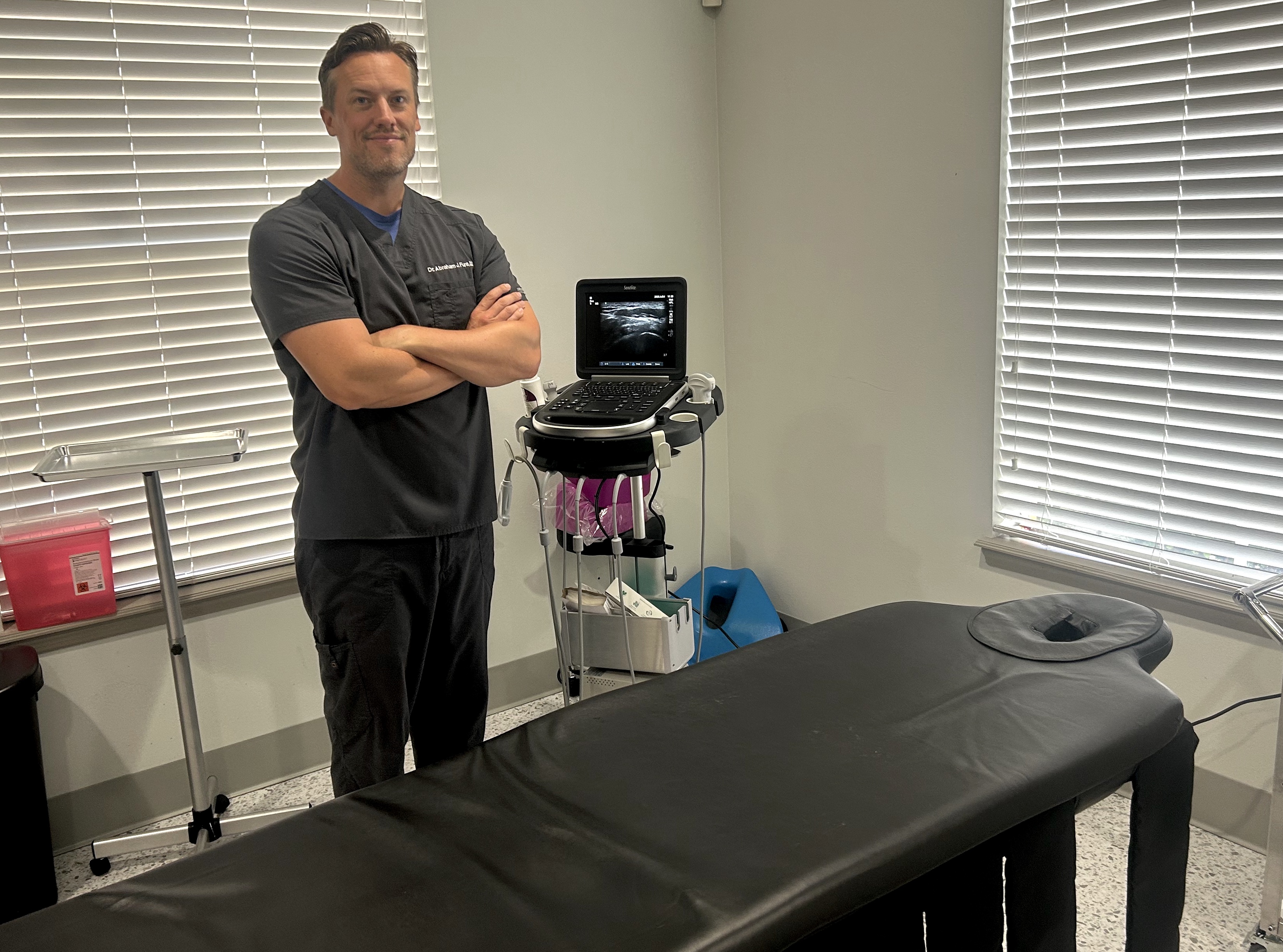
TREATMENT OVERVIEW
Radiofrequency Ablation (RFA) is an advanced, minimally invasive procedure that provides long-lasting relief from chronic pain. By using heat generated from radio waves to treat a specific nerve, RFA interrupts the pain signals sent to the brain. It is an excellent option for patients who have experienced successful but temporary relief from diagnostic nerve blocks of the facet or sacroiliac joints.


PROCEDURE DETAILS
You will be positioned comfortably on your stomach, and the skin over the treatment area will be thoroughly cleaned. A generous amount of local anesthetic is used to numb the skin and deeper tissues to ensure your comfort throughout the procedure.
Using fluoroscopy (live X-ray), a special probe is guided to lie parallel to the specific sensory nerve responsible for your pain. To ensure safety and precision, a two-step confirmation is performed: a sensory test that should replicate your usual pain, and a motor test to ensure the probe is clear of any nerves that control muscle movement.
Once placement is confirmed to be both effective and safe, the nerve is numbed completely. The radiofrequency generator is then activated, delivering a controlled thermal current to create a lesion on the nerve. This interrupts the pain signal without affecting muscle function. This process may be repeated for multiple nerves during the session.
TREATMENT ADVANTAGES
Radiofrequency Ablation offers a durable, non-surgical solution that can significantly reduce pain, improve function, and enhance your overall quality of life.
RFA typically provides significant pain relief that lasts from 6 to 18 months, and in some cases, even longer, far outlasting standard injections.
Many patients are able to dramatically reduce or completely stop taking oral pain medications, thereby avoiding their associated costs and side effects.
With pain dramatically reduced, you can return to the activities you love, engage more fully in physical therapy, and enjoy an active lifestyle.
This procedure provides durable results without the risks, scarring, and extended recovery time associated with major spinal surgery.
Despite its advanced nature, RFA is an outpatient procedure, and most patients are able to return to their normal routines within just a few days.
RFA is a well-established, evidence-based procedure with a high success rate for patients who have been properly identified via diagnostic blocks.
IMPORTANT INFORMATION
Radiofrequency Ablation is a very safe procedure, especially since the target nerves are confirmed with stimulation tests before treatment. Most side effects are temporary and a normal part of the healing process.
Important: It is normal to have some soreness after RFA, which may last for a week or more. The full pain-relieving effect of the procedure can take up to four weeks to develop.
PREPARATION GUIDE
Proper preparation is key to a successful and smooth procedure. Please review the following important steps to ensure you are ready for your appointment.
Ensure you have a thorough review with Dr. Fura. Disclose all allergies, especially to medications like contrast dye.
Stop blood thinners and other specific medications as instructed by Dr. Fura before your procedure.
Do not eat or drink after midnight. You must arrange for a responsible adult to drive you home afterward.
Wear comfortable, loose clothing. Avoid jewelry and leave valuables at home for safekeeping.
RECOVERY GUIDE
Recovery involves managing some initial soreness as the nerves heal. It is important to be patient, as the full benefits of RFA can take a few weeks to appear.
Rest for the remainder of the day. Use ice packs on the procedure sites for 20-minute intervals to reduce soreness. You may use over-the-counter pain relievers as directed. Do not drive.
It is normal to experience muscle soreness and aches in the treated area. This is not your original pain but rather a temporary post-procedure discomfort. Gradually increase your activity as tolerated.
The post-procedure soreness should fully resolve, and the therapeutic benefit of the nerve ablation will become more apparent. You should notice a significant reduction in your original chronic pain.
A follow-up visit is typically scheduled around this time to assess the final outcome of the procedure and to discuss an ongoing physical therapy plan to maximize your recovery.
Please don't hesitate to reach out and request an appointment. We look forward to meeting with you, addressing your concerns, and working together to enhance your quality of life.